Adriaan Goekoop | |
|---|---|
 | |
| Born | April 28, 1859 |
| Died | September 24, 1914 |
| Occupation | Architect |
Adriaan Eliza Herman Goekoop (born April 28, 1859, in Goedereede; died September 24, 1914, in The Hague) was an architect and amateur archaeologist from The Hague.
Adriaan Goekoop | |
|---|---|
 | |
| Born | April 28, 1859 |
| Died | September 24, 1914 |
| Occupation | Architect |
Adriaan Eliza Herman Goekoop (born April 28, 1859, in Goedereede; died September 24, 1914, in The Hague) was an architect and amateur archaeologist from The Hague.

Adriaan Goekoop was born to Cornelis Goekoop (1819–1890) and Diderica Maria Goekoop (1818–1872). [1] His father was a successful politician, serving as mayor of Goedereede (1844–1859), Ouddorp (1852–1856), and Stellendam (1852–1859). During the construction of Alexanderstraat in The Hague, Goekoop's parents were among the early residents, purchasing a building there. Goekoop spent his entire childhood at number 17, close to Plein 1813. He pursued legal studies in Leiden, receiving his degree in 1888. When his father Cornelis died on January 17, 1890, Adriaan inherited his real estate and took residence in his house on Laan van Meerdervoort.
In 1890, Goekoop married the noblewoman Cécile de Jong van Beek en Donk, daughter of a prosecutor general in 's-Hertogenbosch and a significant landowner in The Hague. As she was not fond of the name Adriaan, she preferred to call him 'Paul'. Cécile went on to become a well-known feminist writer and played an instrumental role in organizing the Nationale Tentoonstelling van Vrouwenarbeid 1898 in The Hague, which took place from July to September 1898. During this period, a temporary separation occurred between the couple. She spent several months living in Rome. They reconciled in 1899, but later that year decided to divorce.
Goekoop married for the second time in 1905, to art historian Dr. Johanna de Jongh (1877–1946). The couple had three children: Dr. Cornelis (1906–1968, father of Mayor Cees Goekoop), Johanna (1907), and Adriaan (1908–1977). Johanna was a trailblazer in her field, having been the first woman to graduate from Berlin in 1903 (with the dissertation Holland und die Landschaft). From 1904, she lectured in Utrecht as a private docent, another first for women. The couple shared a love for antiquity, particularly classical archaeology. In 1929, she purchased and extensively renovated the dilapidated Castle De Essenburgh, retaining ownership until its sale in 1944 to Bernard Carp, even though she had relocated to Ginneken in 1935. [2]
As The Hague's city center grew increasingly congested, there was a pressing demand for residential areas outside of the city's canal belt. In response, Goekoop founded several subsidiaries, each focusing on a specific district, including the Company for the Exploitation of Real Estate Laan van Meerdervoort. He continually expanded his land holdings; in 1895, for example, he purchased a dune landscape and began developing the first streets of the Statenkwartier. This work resulted in large, square-like intersections such as Frederik Hendrikplein, Prins Mauritsplein, and Statenplein.
The story of Zorgvliet was unique. The estate had previously belonged to King Willem II, then Anna Paulowna, and later her daughter, Sophie. After Sophie married Charles Alexander, Grand Duke of Saxe-Weimar-Eisenach, the couple often summered at the Catshuis on Zorgvliet. She sold parcels of the land that later became the Statenkwartier and Duinoord districts. Upon Sophie's death in 1897, her sons sold Zorgvliet in lots. Goekoop purchased not only a significant amount of land there, but he had also previously bought part of Zorgvliet from prior owners. At one point, he owned 36 hectares of land in the area.
In 1906, the Goekoop family moved to the monumental villa 'Goekoop' in the Haagse Bos. Here, under their own direction, they carried out a series of excavations. After Adriaan's death, Johanna continued this work and also began to publish about it.
From his school days, Adriaan had an interest in history and ancient Greece, an interest that stayed with him throughout his life. However, his interests also extended to the development of other matters. He made donations to the Gymnasium Haganum, the Hague Cooking School, the Eye Hospital on Tasmanstraat, and he supported the excavations in Voorburg of Forum Hadriani. He was a board member of the Arentsburgh association. In 1902, he bought an Old Egyptian burial chamber from the Egyptian government which he donated to the National Museum of Antiquities in Leiden. [3] He also supported excavation activities outside the Netherlands. And during the Balkan War, he donated 40,000 guilders for the Dutch deployment of an ambulance in Greece. [4]
He traveled extensively to Greece and was involved in several excavations. He also maintained contact with Wilhelm Dörpfeld. In his book Ithaque, la Grande (1908), he discusses this.
Adriaan Goekoop died on September 24, 1914, in The Hague. After his death, his wife continued the work in the villa and the villa itself is now a listed building.
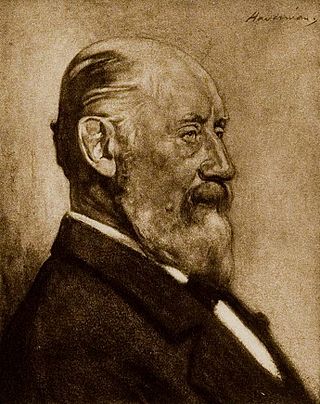
Hendrik Willem Mesdag was a Dutch marine painter.

Adriaen Pietersz van de Venne, was a versatile Dutch Golden Age painter of allegories, genre subjects, and portraits, as well as a miniaturist, book illustrator, designer of political satires, and versifier.
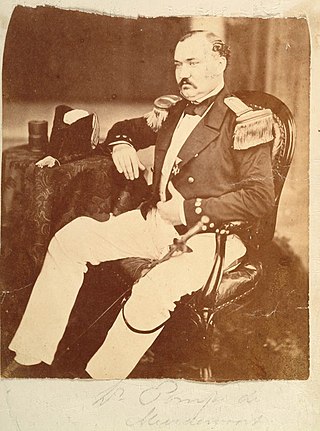
Johannes Lijdius Catharinus Pompe van Meerdervoort was a Dutch physician based at Nagasaki, in Bakumatsu period Japan. While in Japan, he briefly taught medicine, chemistry and photography at the Nagasaki Naval Training Center, and established a medical school and hospital. Some of his noted students included Nagayo Sensai and Matsumoto Jun.

Floris Adriaan van Hall, Baron of Hall was a prominent Dutch nobleman and statesman in the 19th century. He played an important role as representative of the Amsterdam trade and banking sector, and later as politician. He served as Prime Minister of the Netherlands from 1853 to 1856, and again from 1860 to 1861.

Mr. Joan Cornelis van der Hoop was a Dutch lawyer, public prosecutor and minister and, at the time of the Dutch Republic, fulfilled important positions under king William I and - with the exception of the Batavian-French era - left his mark on the Dutch navy. A street is named after him in Amsterdam.

Francois (Frans) Verwilt was as a Dutch Golden Age landscape painter.

Willem Anthony Engelbrecht, also known as Willem Anthonie Engelbrecht, was a Dutch jurist and colonial administrator. He was one of the originators of the so-called "Dutch Ethical Policy" in the Dutch East Indies.

Cornelis "Kees" de Gijselaar was a Dutch politician and patriot, and a leader in the rebellion during the Dutch Republic against the House of Orange.
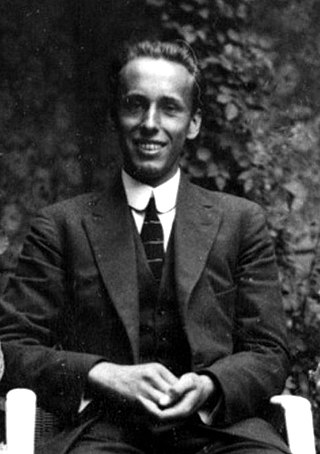
Jacobus Johannes (J.J.) van der Leeuw was a Dutch theosophist and author.
Van Maanen is the name of a Dutch patrician family, originating in the Duchy of Guelders. The family takes its name from the town of Manen, situated south of the city of Ede in the province of Gelderland.

Jhr. Johannes Cornelis de Jonge was a Dutch Rijksarchivaris, historian, and politician. He is best known for his encyclopedic Geschiedenis van het Nederlandsche Zeewezen, a naval history of the Netherlands that was based on the Dutch naval archives, a large part of which were destroyed in a fire in the archives of the Dutch Department of the Navy in 1844. By default therefore this history had to come in the place of the lost primary documents.
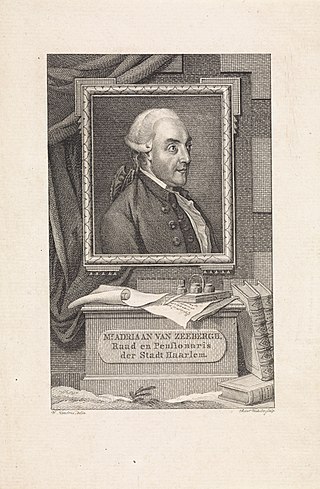
Adriaan van Zeebergh was a Dutch politician during the Patriottentijd.
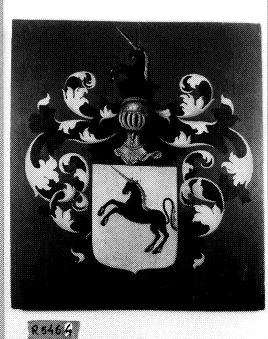
Cornelis van der Mijle was a Dutch politician and diplomat in the service of the Dutch Republic and a regent of Leiden University. He was the son-in-law of Johan van Oldenbarnevelt.

Karel Petrus Cornelis de Bazel was a modern Dutch architect, engraver, draftsman, furniture designer, carpet designer, glass artist and bookbinding designer. He was the teacher of Adriaan Frederik van der Weij and the first chairman of the Bond van Nederlandse Architecten, beginning in 1909.
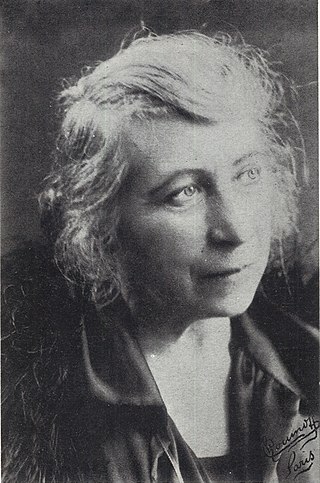
Jkvr. Cécile Wilhelmina Elisabeth Jeanne Petronella de Jong van Beek en Donk was a Dutch feminist writer.

Willem Cornelis Bauer also known as Wilhelm Bauer was a Dutch architect and painter.

Johanna Henriette Derkinderen-Besier was a Dutch needle artist, fashion historian and publicist who was known professionally under the name J. H. Derkinderen-Besier.

Johanna Bonne-Wepster was a Dutch entomologist who researched disease-transmitting mosquitoes and collected and identified a large collection of mosquitoes over her long career.
![]() Media related to Adriaan Goekoop at Wikimedia Commons
Media related to Adriaan Goekoop at Wikimedia Commons